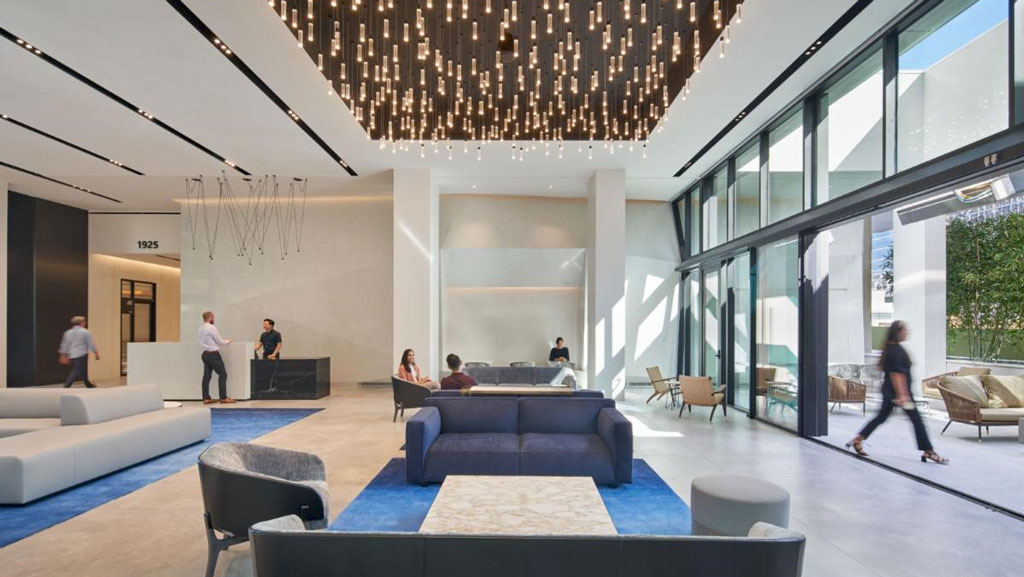CALIFORNIA — Things are looking bright at the Watt Plaza Lobby.
A new design has been completed by STUDIOS Architecture, which called for a massive decorative light display that was co-ordinated by lighting design specialists Banks Landl Lighting Design (BLLD).
The result is a constellation of 350 individually mounted P1M LED luminaires. Archilume is the lighting designer, manufacturer and supplier of the P1M.
Archilume, based in Vancouver, called the P1M its marquee pendant that will set the stage for what is now the brand’s design ethos: “Innovating by combining science with beauty.”
The Canadian lighting studio was founded in 2013 as a creator of glare-free decorative luminaires. It was one of the first companies to use energy-efficient LED chip-on-board technology in a luminaire and, with the P1M, helped lead the way with the application of total internal reflection optics in decorative LED lighting.
“Technological lighting advances aside, the sheer brilliance of the P1M lies in its ability to be mounted as a solitary pendant or grouped to form a chandelier,” said the company in a press release. “But it wasn’t until the Watt Plaza Lobby and STUDIOS Architecture’s need for a focal lighting feature that the P1M could truly shine.”
Archilume partnered with BLLD on the project. BLLD designed a template system for the overall 15’x19’ lighting cove area in the ceiling with which the contractor could simply layout the individual mounting points and required wiring. BLLD’s lighting design template was projected from the floor, using a laser to mark each of the installation positions. Each fixture was then mounted at a different cable length.
“This was a critical component to the overall design success of the installation as the pattern needed to be exact and simple enough for the installation to be efficient, but random enough for the overall mass to look unified,” stated BLLD.



Recent Comments
comments for this post are closed